THE DEAD ALSO
DANCE
By: Manuel Montes.
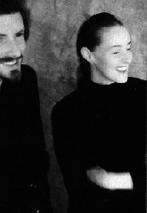 1980 is the date: the year when Lisa
Gerrard and Brendan Perry met in Melbourne, Australia. Both of
an Anglo-Irish origin, they shared at once a special interest in the music of their
ancestors, and also a completely original vision, different from that in the world
surrounding them.
1980 is the date: the year when Lisa
Gerrard and Brendan Perry met in Melbourne, Australia. Both of
an Anglo-Irish origin, they shared at once a special interest in the music of their
ancestors, and also a completely original vision, different from that in the world
surrounding them.
It didn't take them long to found what would be their band, Dead
Can Dance. They did so in 1981, thus shaping in an identifiable way a growing
personal relationship and an intense appreciation for some very determined literary and
artistic styles. During the following months they wrote as much music as they could, yet
they did not come to release anything yet, except for the theme "The Fatal
Impact", that appeared in a cassette released together with the specialized magazine Fast
Forward.
Nevertheless, a completely innovative flair, of a very high
quality indeed, could already be seen. They only needed to find a record label that dared
to release their music and thus make their particular art available to the general
audience. To this end, in 1982 they went to London and in 1983 they signed a contract with
the label 4AD.
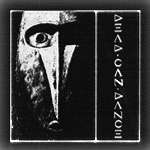 Their first record, named after the band,
was released in March 1984. In it all their work of those last years was compiled,
including the already mentioned "The Fatal Impact". In actual fact, both its
contents and the LP cover, a visual explanation of the why and wherefore of the name of
the band, were truly impressive. The image and the dark impact, almost baroque in nature,
of the music, earned them all kinds of epithets, not always agreeable ones.
Their first record, named after the band,
was released in March 1984. In it all their work of those last years was compiled,
including the already mentioned "The Fatal Impact". In actual fact, both its
contents and the LP cover, a visual explanation of the why and wherefore of the name of
the band, were truly impressive. The image and the dark impact, almost baroque in nature,
of the music, earned them all kinds of epithets, not always agreeable ones.
Yet the first step had already been taken. By the end of that
year they were included in the compilation Dream and Desires, and they
collaborated with This Mortal Coil, in the album It'll End In Tears
(two songs). They also released a maxisingle (Garden of the Arcane Delights) with
four themes that in the modern CD releases have been incorporated to the first record of
the band.
Their special way to understand music, an intelligent mixture of
ethnic touches, traditional rock and also ancient styles, began to attract the attention
of the appropriate circles. This would be confirmed in 1985 with their second record,
called Speen and Ideal, whose presence in number 2 of the independent lists
already hinted at a really splendid future.
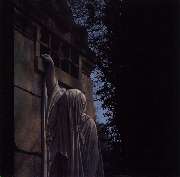 With success already in the bag, Dead Can Dance could
begin to think about long tours. The first one took place in 1986, showing that their live
performances could be even more impressive than their albums recorded at studios. Their
work in composition, however, would not stop. Their label, 4AD, would
release in 1987 a compilation and a video called Lonely Is An Eyesore, to which
they contributed two new themes. Besides, they released their third record, Within the
Realm of a Dying Sun, which would set a considerable change in their course, if not
of a stylistic kind, being so with respect to their form. Perry and Gerrard
decided to give a greater importance to the merging of electronic and acoustic instruments
from then on, determining a fusion of sound of a tremendous original nature.
With success already in the bag, Dead Can Dance could
begin to think about long tours. The first one took place in 1986, showing that their live
performances could be even more impressive than their albums recorded at studios. Their
work in composition, however, would not stop. Their label, 4AD, would
release in 1987 a compilation and a video called Lonely Is An Eyesore, to which
they contributed two new themes. Besides, they released their third record, Within the
Realm of a Dying Sun, which would set a considerable change in their course, if not
of a stylistic kind, being so with respect to their form. Perry and Gerrard
decided to give a greater importance to the merging of electronic and acoustic instruments
from then on, determining a fusion of sound of a tremendous original nature.
Already in 1988, the band released their fourth album: The
Serpent's Egg, a conceptual approach to the sinuosity of terrestrial topography and
the particular form of our Earth. In this record, Dead Can Dance forget a
little about the romanticism of previous works and rather tend to the medieval music, with
a really impressive result.
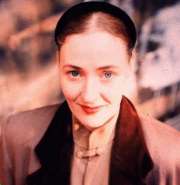 By the end of this same year, and once
they were contacted by the Spanish film director Agustín Villaronga,
they composed the soundtrack for the movie El Niño de la Luna, a film where Lisa
Gerrard herself was a guest actress. The success of the film was remarkable, it
participated in Cannes and was awarded several prizes all over the world.
By the end of this same year, and once
they were contacted by the Spanish film director Agustín Villaronga,
they composed the soundtrack for the movie El Niño de la Luna, a film where Lisa
Gerrard herself was a guest actress. The success of the film was remarkable, it
participated in Cannes and was awarded several prizes all over the world.
Yet their evolution had not ceased. Their Spanish experience
would yield still more fruit, specially in their fifth record, called Aion and
released in 1990. In it we can find influences from the Renaissance and their musical
aesthetics, both liturgical and secular. To this end they used instruments similar to the
ones typical of those ages.
During the next two or three years they would make numerous
collaborations in different environments, specially in several theatre productions, in
which the members of the band compose and play. Also, their music was included in the
samplers Red Tape, Lilliput, Mai Pen Rai, and Music for the 90's Volume 5.
By the end of 1992, the first record by Dead Can Dance domestically
released in the USA was offered to the general audience in the format of compiled material
from other records plus two new themes.
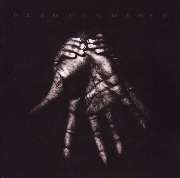 In 1993, the American director Ron Fricke premieres
his spectacular movie Baraka. The weight of the soundtrack is carried by Michael
Stearns, but among the great amount of music that appears in it most remarkable
are several new and old themes by Dead Can Dance, one of which ("The
Host of Seraphim") appears in the released soundtrack of the film. Few times have
image and sound been so well mixed.
In 1993, the American director Ron Fricke premieres
his spectacular movie Baraka. The weight of the soundtrack is carried by Michael
Stearns, but among the great amount of music that appears in it most remarkable
are several new and old themes by Dead Can Dance, one of which ("The
Host of Seraphim") appears in the released soundtrack of the film. Few times have
image and sound been so well mixed.
Without leaving their sporadic collaborations, the band
participates with two compositions in the project by Hector Zazou,
Sahara Blue, as well as in the Angels of Perversity, by Elijah's
Mantle and Mark Ellis. Later would arrive the moment to release
their new record Into the Labyrinth, the one that would provide them with the
greatest success in sales up to now. Nonetheless, things had changed within the band: the
two members live separately, one of them by the border between Eire and Northern Ireland (Perry)
and the other in Australia (Gerrard). The result was a magnificent record
even if it has been composed individually (it sufficed a three-month reunion to record
it). Thus a hypothetical door towards later solo works on the part of each one of the
artists was opened in fact.
The consequent international tour would allow for the release of
the record and the video Toward the Within, both recorded live. Almost all the
themes composing them are new. Together with the group other musicians participated and
contributed different sounds as well as an uncommon stylistic variety. Praised by the
critics, Dead Can Dance already dominate their musical kingdom, although
the future appears to be uncertain due to the separation of its members. Their music would
likewise appear in 1994 in the compilation by 4AD, All Virgos Are Mad,
as well as in another sampler, No Balls, in 1995.
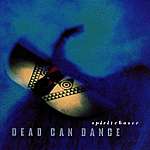 The last record released by the band is Spiritchaser, appeared
in 1996. As usual, Perry and Gerrard contribute their
own compositions, sung by either of them, yet never in a duo. Their contents, full of
percussive sounds, remind a little of their first works.
The last record released by the band is Spiritchaser, appeared
in 1996. As usual, Perry and Gerrard contribute their
own compositions, sung by either of them, yet never in a duo. Their contents, full of
percussive sounds, remind a little of their first works.
What about the future? Both Perry and Gerrard
announce solo records, as could be expected, and in actual fact Lisa
already has released The Mirror Pool, constructed on material previously composed
by herself that had no place in the albums by Dead Can Dance, with more
vocal and orchestral arrangements. For now, it seems that Dead Can Dance
will continue ahead, and actually the release of a new CD has already been advertised. In
any case, together or separated, Lisa and Brendan have
already made history with their eight records. It only remains for us to see what the next
years will bring for them, and whether their capacity to amaze us will continue to be as
great as it has been so far.
You can find more information about Dead
Can Dance at:
Do you wish to purchase any recordings
by this band? It's very easy, click here:
For Video recordings, click here:
 Previous Page (Articles/News)
Previous Page (Articles/News)
 1980 is the date: the year when Lisa
Gerrard and Brendan Perry met in Melbourne, Australia. Both of
an Anglo-Irish origin, they shared at once a special interest in the music of their
ancestors, and also a completely original vision, different from that in the world
surrounding them.
1980 is the date: the year when Lisa
Gerrard and Brendan Perry met in Melbourne, Australia. Both of
an Anglo-Irish origin, they shared at once a special interest in the music of their
ancestors, and also a completely original vision, different from that in the world
surrounding them. Their first record, named after the band,
was released in March 1984. In it all their work of those last years was compiled,
including the already mentioned "The Fatal Impact". In actual fact, both its
contents and the LP cover, a visual explanation of the why and wherefore of the name of
the band, were truly impressive. The image and the dark impact, almost baroque in nature,
of the music, earned them all kinds of epithets, not always agreeable ones.
Their first record, named after the band,
was released in March 1984. In it all their work of those last years was compiled,
including the already mentioned "The Fatal Impact". In actual fact, both its
contents and the LP cover, a visual explanation of the why and wherefore of the name of
the band, were truly impressive. The image and the dark impact, almost baroque in nature,
of the music, earned them all kinds of epithets, not always agreeable ones. With success already in the bag, Dead Can Dance could
begin to think about long tours. The first one took place in 1986, showing that their live
performances could be even more impressive than their albums recorded at studios. Their
work in composition, however, would not stop. Their label, 4AD, would
release in 1987 a compilation and a video called Lonely Is An Eyesore, to which
they contributed two new themes. Besides, they released their third record, Within the
Realm of a Dying Sun, which would set a considerable change in their course, if not
of a stylistic kind, being so with respect to their form. Perry and Gerrard
decided to give a greater importance to the merging of electronic and acoustic instruments
from then on, determining a fusion of sound of a tremendous original nature.
With success already in the bag, Dead Can Dance could
begin to think about long tours. The first one took place in 1986, showing that their live
performances could be even more impressive than their albums recorded at studios. Their
work in composition, however, would not stop. Their label, 4AD, would
release in 1987 a compilation and a video called Lonely Is An Eyesore, to which
they contributed two new themes. Besides, they released their third record, Within the
Realm of a Dying Sun, which would set a considerable change in their course, if not
of a stylistic kind, being so with respect to their form. Perry and Gerrard
decided to give a greater importance to the merging of electronic and acoustic instruments
from then on, determining a fusion of sound of a tremendous original nature. By the end of this same year, and once
they were contacted by the Spanish film director Agustín Villaronga,
they composed the soundtrack for the movie El Niño de la Luna, a film where Lisa
Gerrard herself was a guest actress. The success of the film was remarkable, it
participated in Cannes and was awarded several prizes all over the world.
By the end of this same year, and once
they were contacted by the Spanish film director Agustín Villaronga,
they composed the soundtrack for the movie El Niño de la Luna, a film where Lisa
Gerrard herself was a guest actress. The success of the film was remarkable, it
participated in Cannes and was awarded several prizes all over the world. In 1993, the American director Ron Fricke premieres
his spectacular movie Baraka. The weight of the soundtrack is carried by Michael
Stearns, but among the great amount of music that appears in it most remarkable
are several new and old themes by Dead Can Dance, one of which ("The
Host of Seraphim") appears in the released soundtrack of the film. Few times have
image and sound been so well mixed.
In 1993, the American director Ron Fricke premieres
his spectacular movie Baraka. The weight of the soundtrack is carried by Michael
Stearns, but among the great amount of music that appears in it most remarkable
are several new and old themes by Dead Can Dance, one of which ("The
Host of Seraphim") appears in the released soundtrack of the film. Few times have
image and sound been so well mixed. The last record released by the band is Spiritchaser, appeared
in 1996. As usual, Perry and Gerrard contribute their
own compositions, sung by either of them, yet never in a duo. Their contents, full of
percussive sounds, remind a little of their first works.
The last record released by the band is Spiritchaser, appeared
in 1996. As usual, Perry and Gerrard contribute their
own compositions, sung by either of them, yet never in a duo. Their contents, full of
percussive sounds, remind a little of their first works.